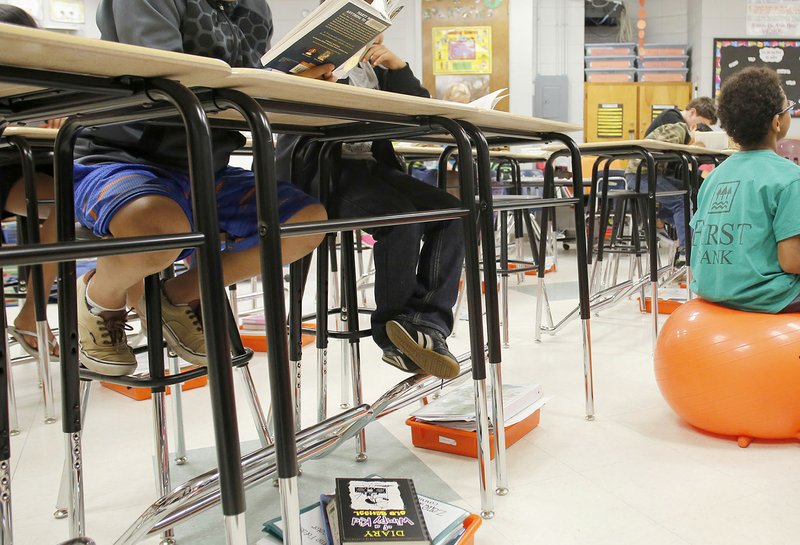Arkansas is to receive almost $9.4 million in federal funding through the Bipartisan Safer Communities Act, the U.S. Department of Education has announced.
Labeled The Stronger Connections grants, the nearly $1 billion in overall funding to the states and U.S. territories is to help schools provide all students with safe and supportive learning opportunities and environments.
State education agencies are to distribute the money on a competitive basis to high-need school systems -- as determined by the state -- to fund activities as permitted by the federal Elementary and Secondary Schools Act.
The money for Arkansas comes at a time when the Arkansas School Safety Commission, created by Gov. Asa Hutchinson in 2018 and reconvened earlier this year, has just completed an update of a wide-ranging set of recommendations on safety measures for schools. The recommendations deal with matters such as safety features of school buildings, campus security personnel, mental health, cyber security, and student data analysis.
Hutchinson has said he hopes school districts will use the updated recommendations in their financial planning. Arkansas lawmakers approved a $50 million grant program during a special session in August to be used to address recommendations made by the safety commission.
Kimberly Mundell, a spokesperson for the Arkansas Division of Elementary and Secondary Education, acknowledged the newly announced federal grant.
"We are in the process of understanding the federal guidelines and requirements around the funding," Mundell said Thursday. "School safety continues to be a topic of interest and concern, and we are excited for the potential opportunities this grant may provide for districts."
U.S. Secretary of Education Miguel Cardona said this week that "safe and supportive schools help our children and youth overcome challenges and provide a strong foundation for school safety. These grants will provide real benefits to real students in real schools."
Evidence shows that safe and supportive schools contribute to improved academic achievement, emotional well-being, reduced disciplinary actions and increased positive behaviors, Cardona also said.
Additionally the federal money can be used to support school and community partnerships aimed at preventing and responding to acts of bullying, violence and hate.
Cardona sent chief state school officers a "Dear Colleague Letter" outlining principles that states are encouraged to consider when designing a competitive grant program and providing school districts with directions for how they use the funds.
He recommended that the grants be awarded for:
• Comprehensive, evidence-based strategies that meet student social, emotional, and mental well-being needs.
• Plans that engage students, families, educators, staff, and community organizations in creating safe, inclusive, and supportive learning environments.
• Policies and practices that are responsive to underserved students, protect student rights, and demonstrate respect for student dignity and potential.
The federal agency highlighted school safety initiatives in different parts of the country including in St. Paul, Minn., in 20 West Virginia school districts and in New Mexico.
In St. Paul, for example, the district is using almost $13 million in federal American Rescue Plan money to support the mental health and wellness of students and staff by hiring 32 additional counselors, social workers, and psychologists; partnering with community organizations to offer mental health support for students; training staff on how to handle trauma; and creating calming spaces for staff and students.
School districts in West Virginia are implementing evidence-based community schools and adding counselors. Six counties now employ at least one health professional in each school, and nearly 100 schools have expanded mental health services, according to the federal agency.
